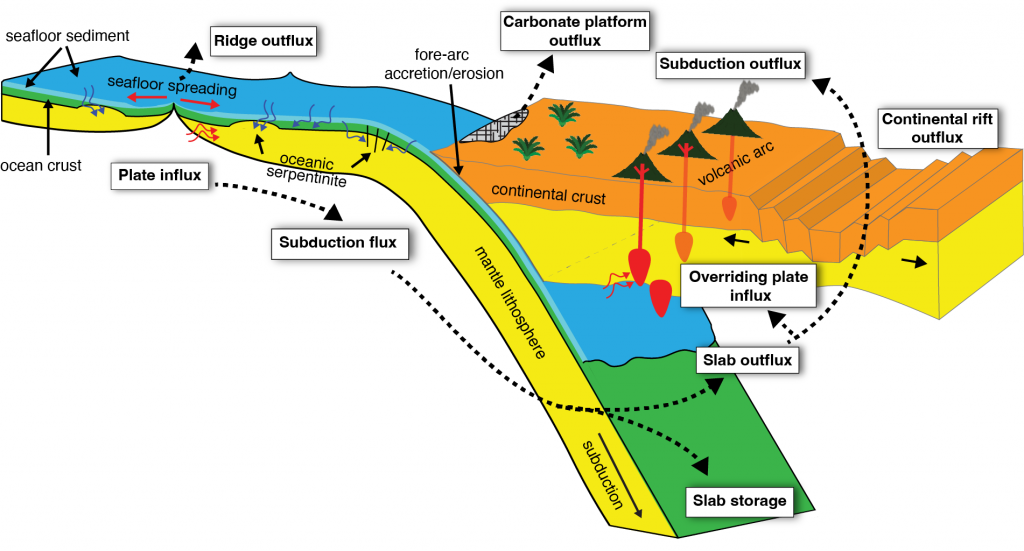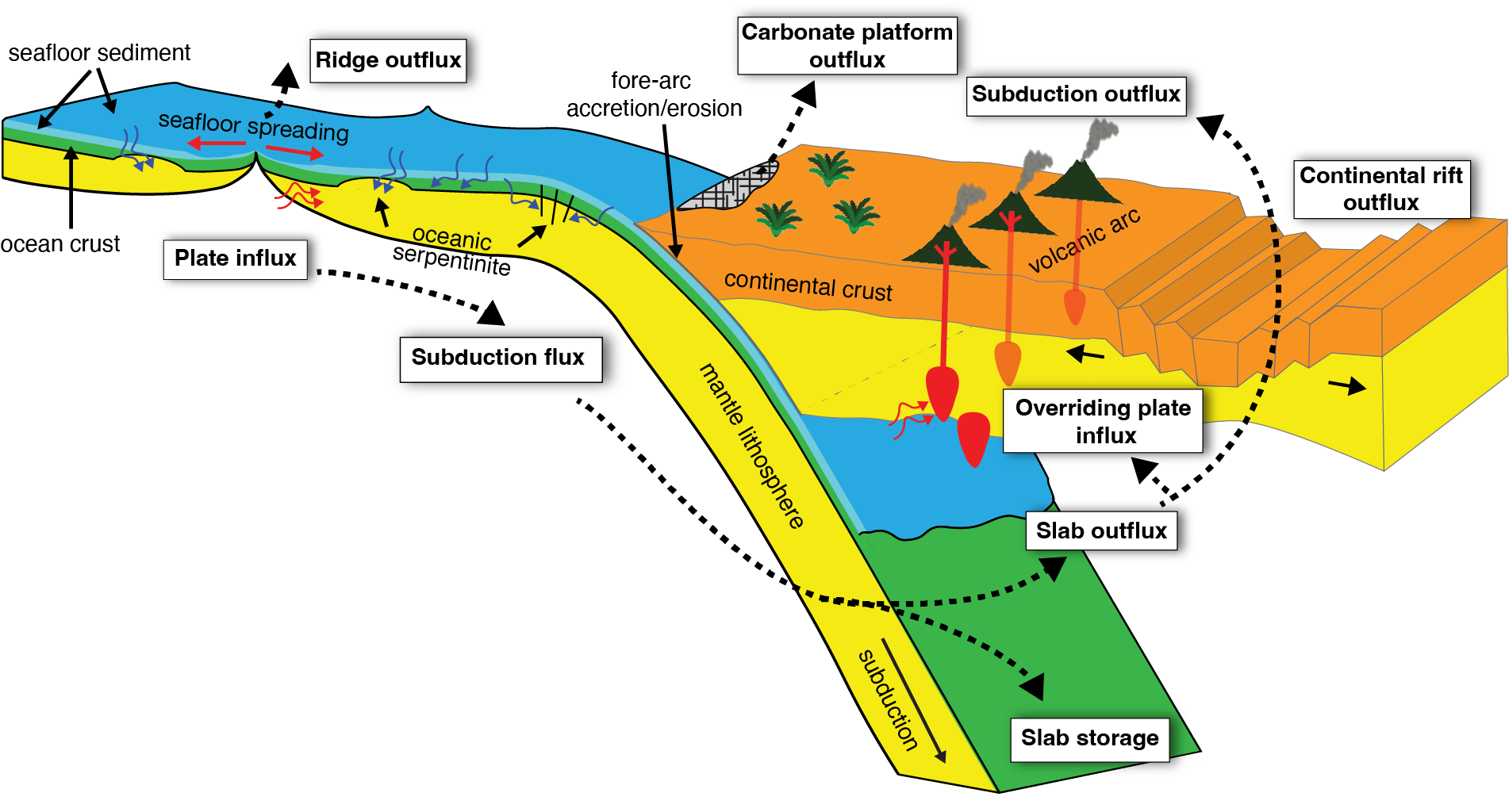Solid Earth CO2 outgassing, driven by plate tectonic processes, is a key driver of carbon cycle models. However, the magnitudes and variations in outgassing are poorly constrained in deep-time. We assess plate tectonic carbon emissions and sequestration by coupling a plate tectonic model with reconstructions of oceanic plate carbon reservoirs and with a thermodynamic model to quantify outfluxes from slabs and continental arcs over one billion years. In the early Neoproterozoic our model predicts a peak in crustal production and net outgassing from 840 to 780 Ma that corresponds to a contemporaneous pulse in large igneous province (LIP) eruptions. The Sturtian and Marinoan glaciations (717–635 Ma) correspond to a low in mid-ocean ridge outgassing, while the following Ediacaran global warming coincides with a rise in net atmospheric carbon influx, driven by an increase in plate boundary and rift length. The Cambrian, Silurian/Devonian and Triassic Jurassic hothouse climates are synchronous with a reduction in carbon sequestration flux into oceanic plates, increasing net outgassing. In contrast, the Early Cretaceous hothouse climate is accompanied by a pronounced increase in mid-ocean ridge outgassing. Both the Early Ordovician cooling and the late Paleozoic ice ages coincide with a significant decrease in net atmospheric outgassing, driven by an increase in carbon sequestration. The late Cenozoic glaciation is associated with a long-term decrease in mid-ocean ridge and rift degassing, and a pronounced increase in carbon flux into pelagic carbonate sediments. Our tectono-thermodynamic carbon cycle model provides a new foundation for future long-term climate and geochemical cycling models.

![]()

